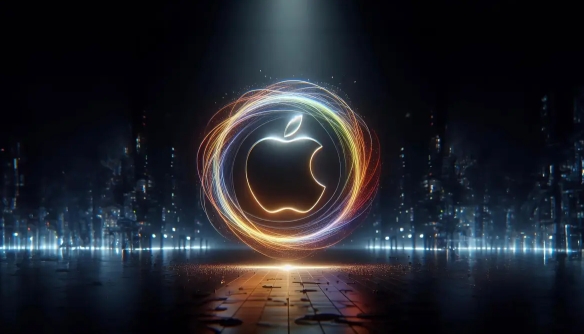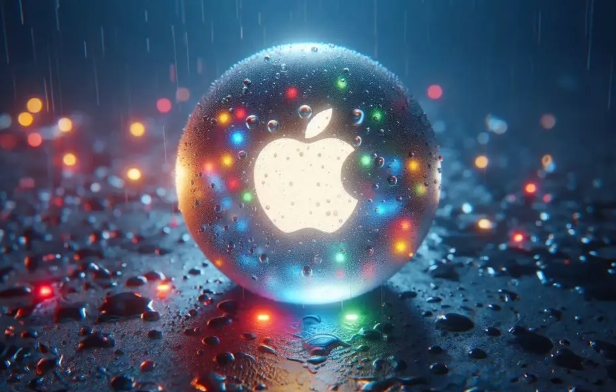如何在没有恢复分区的情况下在Mac上安装MACO?
如果Mac没有恢复分区,可以通过创建外部可启动安装器来安装macOS。具体步骤如下:1. 使用至少12GB的U盘下载macOS安装程序(如Ventura、Monterey或Big Sur),并通过磁盘工具将其格式化为“Mac OS Extended (Journaled)”。2. 在终端中运行createinstallmedia命令,将U盘转换为可启动安装器。3. 关闭Mac并插入U盘,开机时按住Option键选择U盘启动。4. 进入macOS安装环境后,使用磁盘工具选择内部硬盘并格式化为APFS或Mac OS Extended。5. 最后按照屏幕提示完成macOS安装,安装过程大约需要20至40分钟,完成后Mac会自动重启进入设置助手。

If your Mac doesn't have a recovery partition, installing macOS might feel tricky at first, but it's definitely doable. The key is to create an external bootable installer and use that to get the job done.

Here’s how you can handle it step by step:

Create a bootable macOS installer on a USB drive
To install macOS without a recovery partition, you’ll need a USB flash drive (at least 12GB or more) to make a bootable installer. Apple provides tools for this, and it's straightforward if you follow the right steps.
-
Download the macOS installer from the App Store (like Ventura, Monterey, or Big Sur — depends on what your Mac supports).

Plug in your USB drive and format it using Disk Utility: name it something like “MacOS Install,” and choose "Mac OS Extended (Journaled)" as the format.
-
Open Terminal and run the
createinstallmediacommand. For example, if you downloaded Ventura, the command would look like:sudo /Applications/Install\ macOS\ Ventura.app/Contents/Resources/createinstallmedia --volume /Volumes/MacOS\ Install
This process will erase the USB drive and turn it into a full macOS installer.
Boot from the USB installer
Once you’ve created the bootable USB, you’re ready to start the installation process.
- Shut down your Mac.
- Plug in the USB drive.
- Turn on your Mac while holding the Option (⌥) key — this brings up the startup manager where you should see your USB drive listed.
- Select the USB volume and press Enter to boot from it.
From here, you'll land in the macOS Installer environment, which includes Disk Utility and the actual macOS installation option.
Use Disk Utility to prepare your internal drive
Before installing macOS, you need to make sure your internal drive is formatted correctly.
- From the installer screen, go to Utilities > Disk Utility.
- Select your main internal drive (not just a partition), and click "Erase."
- Choose APFS (or Mac OS Extended if needed) as the format, depending on your Mac model and macOS version.
- Give it a name like “Macintosh HD” and proceed with erasing.
Once that’s done, close Disk Utility and proceed to install macOS on the newly formatted drive.
Install macOS from the installer
Now that your drive is ready, the last step is to actually install macOS.
- Follow the on-screen instructions — select your target disk (the one you just erased), and let the installer do its thing.
- It may take 20–40 minutes depending on your hardware.
- Once installed, your Mac should restart automatically and boot into the setup assistant.
Make sure to keep your USB installer handy in case you ever need to repair or reinstall macOS again.
That’s basically all there is to it. You don’t need a recovery partition if you've got a bootable installer ready. Just remember to match macOS versions to your Mac’s compatibility, and double-check the formatting steps so everything boots properly.
以上是如何在没有恢复分区的情况下在Mac上安装MACO?的详细内容。更多信息请关注PHP中文网其他相关文章!

热AI工具

Undress AI Tool
免费脱衣服图片

Undresser.AI Undress
人工智能驱动的应用程序,用于创建逼真的裸体照片

AI Clothes Remover
用于从照片中去除衣服的在线人工智能工具。

Clothoff.io
AI脱衣机

Video Face Swap
使用我们完全免费的人工智能换脸工具轻松在任何视频中换脸!

热门文章

热工具

记事本++7.3.1
好用且免费的代码编辑器

SublimeText3汉化版
中文版,非常好用

禅工作室 13.0.1
功能强大的PHP集成开发环境

Dreamweaver CS6
视觉化网页开发工具

SublimeText3 Mac版
神级代码编辑软件(SublimeText3)
 MySQL在macOS系统的安装步骤详解
Apr 29, 2025 pm 03:36 PM
MySQL在macOS系统的安装步骤详解
Apr 29, 2025 pm 03:36 PM
在macOS上安装MySQL可以通过以下步骤实现:1.安装Homebrew,使用命令/bin/bash-c"$(curl-fsSLhttps://raw.githubusercontent.com/Homebrew/install/HEAD/install.sh)"。2.更新Homebrew,使用brewupdate。3.安装MySQL,使用brewinstallmysql。4.启动MySQL服务,使用brewservicesstartmysql。安装后,可通过mysql-u
 macOS怎么安装AdobeReader
May 16, 2025 pm 08:33 PM
macOS怎么安装AdobeReader
May 16, 2025 pm 08:33 PM
AdobeReader已不再支持macOS,需安装AdobeAcrobatReaderDC。1)访问Adobe官网,下载适合macOS的版本。2)打开.dmg文件,将图标拖到“应用程序”文件夹中,输入管理员密码后完成安装。3)从“应用程序”文件夹中启动AdobeAcrobatReaderDC。
 修复MACOS安装过程中的'不信任_cert_title”错误
Jul 07, 2025 am 01:06 AM
修复MACOS安装过程中的'不信任_cert_title”错误
Jul 07, 2025 am 01:06 AM
解决“Untrusted_Cert_Title”错误需先确保使用官方认证的安装器并正确创建,其次检查系统时间设置是否准确,接着更新固件和引导程序,最后尝试通过网络恢复安装macOS。具体步骤为:1.使用AppStore官方安装器并通过Apple工具如createinstallmedia创建USB安装器,避免手动复制文件或使用第三方工具;2.进入恢复模式后通过终端命令校正日期和时间;3.检查并更新Mac的EFI或固件,确认硬件支持目标macOS版本;4.长按Option Command R启动网络
 如何在空白的硬盘驱动器上安装macOS?
Jul 07, 2025 am 12:32 AM
如何在空白的硬盘驱动器上安装macOS?
Jul 07, 2025 am 12:32 AM
安装macOS从零开始并不复杂,只要准备好工具并按步骤操作即可。首先,准备一个可工作的Mac、至少16GB的U盘、稳定的网络连接和足够的时间;其次,推荐使用Terminal中的createinstallmedia命令创建可启动安装器;接着,通过RecoveryMode或USB安装器进入安装界面;然后使用DiskUtility格式化目标硬盘为APFS或MacOSExtended;最后按照提示完成安装过程。
 无法安装MACOS,因为Path/System/installation/packages/osinstall.mpkg似乎丢失或损坏
Jul 06, 2025 am 01:04 AM
无法安装MACOS,因为Path/System/installation/packages/osinstall.mpkg似乎丢失或损坏
Jul 06, 2025 am 01:04 AM
遇到“macOScouldnotbeinstalledbecausethepath/System/Installation/Packages/OSInstall.mpkgappearstobemissingordamaged”提示时,说明安装或升级macOS过程中系统安装包缺失或损坏,常见于旧版恢复镜像、第三方启动盘或磁盘结构异常;解决方法包括:1.确认启动介质是否完整,建议使用官方createinstallmedia命令制作启动盘并检查OSInstall.mpkg是否存在;2.从恢复模式选择“
 MacOS安装需要多长时间?
Jul 03, 2025 am 01:06 AM
MacOS安装需要多长时间?
Jul 03, 2025 am 01:06 AM
AcLeanMacosinStallationTypallyTakes30MinuteStoanHour,ButseveralFactorsCanextendTheProcess.1)interneTrecoverymayadd15minutestooveranHourforoSdownload,dewendoneNInternestspeed.2)依赖于20 – 40minterdiondion
 如何在没有Apple ID的情况下安装MacOS?
Jul 14, 2025 am 01:19 AM
如何在没有Apple ID的情况下安装MacOS?
Jul 14, 2025 am 01:19 AM
可以不使用AppleID安装macOS,但部分功能受限。安装过程中无需强制登录AppleID,可创建本地账户使用系统基础功能,但iCloud同步、AppStore下载、查找我的Mac等功能需AppleID才能启用。1.安装时可用U盘启动盘或恢复模式安装,创建本地账户;2.本地账户可浏览网页、编辑文档、编程开发、播放媒体,但无法使用iCloud、下载多数AppStore应用;3.首次开机时跳过AppleID登录即可创建本地账户;4.适合机房设备、开发测试、隐私敏感用户,长期使用仍建议绑定Apple
 MACOS安装指南的OpenCore Legacy Patcher
Jul 19, 2025 am 01:26 AM
MACOS安装指南的OpenCore Legacy Patcher
Jul 19, 2025 am 01:26 AM
若设备不在苹果官方支持列表中,可通过OpenCoreLegacyPatcher(OCLP)在老旧Mac上安装macOS。具体步骤如下:1.确认设备兼容性,如2012年前后的MacBookPro、iMac或Macmini,并检查主板芯片组是否支持EFI模式;2.准备16GB或更大的U盘并制作macOS安装U盘,使用官方命令或第三方工具写入镜像;3.下载并运行OCLP,选择目标设备进行补丁处理,自动解决内核扩展和驱动兼容问题,必要时手动调整补丁选项;4.插入打完补丁的U盘,重启时按Option键进入








